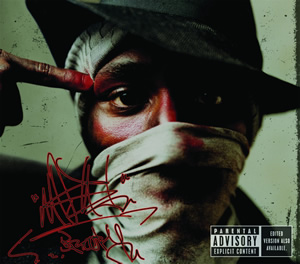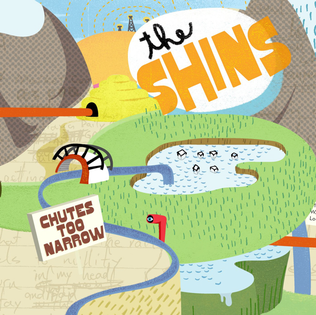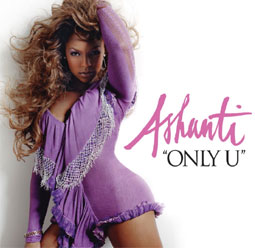Early life
Sanneh was born in Birmingham, West Midlands, England, and spent his early years in Ghana and Scotland, before his family moved to Massachusetts in 1981, then to Connecticut in 1989. [3] [4] His father, Lamin Sanneh, was born in Janjanbureh, Gambia, and was a professor of theological history at Yale University and Yale Divinity School. [4] Kelefa's mother, Sandra, is a white South African linguist who teaches the isiZulu language at Yale. [5]
Sanneh graduated from Harvard University in 1997 with a degree in literature. [6] While at Harvard he worked for Transition Magazine and served as rock director for WHRB's Record Hospital. Sanneh played bass in the Harvard bands Hypertrophie Shitstraw, MOPAR, Fear of Reprisal and TacTic, as well as a Devo cover band that included members of Fat Day, Gerty Farish, Bishop Allen and Lavender Diamond. [7] Sanneh's thesis paper, The Black Galactic: Toward A Greater African America, combined interests in music, literature and culture in writing about The Nation of Islam and the Sun Ra Arkestra as efforts to transcend oppression in the African-American experience with desires to travel into outer space. [8] [9]
Career
Sanneh garnered considerable publicity for an article he wrote in the October 31, 2004, edition of The New York Times titled "The Rap against Rockism". [10] [11] [12] [13] The article brought to light to the general public a debate among American and British music critics about rockism, a term Sanneh defined to mean "idolizing the authentic old legend (or underground hero) while mocking the latest pop star; lionizing punk while barely tolerating disco; loving the live show and hating the music video; extolling the growling performer while hating the lip-syncher." [14] In the essay, Sanneh further asks music listeners to "stop pretending that serious rock songs will last forever, as if anything could, and that shiny pop songs are inherently disposable, as if that were necessarily a bad thing. Van Morrison's 'Into the Music' was released the same year as the Sugarhill Gang's 'Rapper's Delight'; which do you hear more often?" [14]
Sanneh's review of Beyoncé's debut album, Dangerously in Love , titled "The Solo Beyoncé: She's No Ashanti", published on July 6, 2003, in the New York Times, [15] has garnered a cult following, with the headline circulating on the internet over the years as a meme. [16]
Before covering music for the Times, Sanneh was the deputy editor of Transition, a journal of race and culture, based at the W. E. B. Du Bois Institute for African and African American Research, at Harvard University. His writing has also appeared in The Source ; Rolling Stone ; Blender ; The Village Voice ; Man's World ; Da Capo Best Music Writing in 2002, 2005, and 2007; and newspapers around the world.
Sanneh wrote the "Project Trinity," which appeared in The New Yorker's April 7, 2008, edition, to give context to the controversial comments of Reverend Jeremiah Wright, who was Barack Obama's pastor. The article provides a historical context of the Trinity United Church of Christ, Obama's church, and to Wright, the former pastor of Trinity.
In 2008, he left The New York Times to join The New Yorker as a staff writer. [17] As of 2009, Sanneh lived in Brooklyn. [3]
Sanneh's book, Major labels: A history of popular music in seven genres, was published by Penguin Press in October, 2021. [18]

Music journalism is media criticism and reporting about music topics, including popular music, classical music, and traditional music. Journalists began writing about music in the eighteenth century, providing commentary on what is now regarded as classical music. In the 1960s, music journalism began more prominently covering popular music like rock and pop after the breakthrough of The Beatles. With the rise of the internet in the 2000s, music criticism developed an increasingly large online presence with music bloggers, aspiring music critics, and established critics supplementing print media online. Music journalism today includes reviews of songs, albums and live concerts, profiles of recording artists, and reporting of artist news and music events.

African-American music is a broad term covering a diverse range of musical genres largely developed by African Americans and their culture. Its origins are in musical forms that developed as a result of the enslavement of African Americans prior to the American Civil War. It has been said that "every genre that is born from America has black roots."

This article is an overview of the major events and trends in popular music in the 2000s.

The New Danger is the second studio album by American rapper Mos Def, released on October 12, 2004, by Rawkus and Geffen Records. It is the follow-up to his breakthrough solo effort Black on Both Sides (1999), after which he devoted more time into his film and stage career.
WHRB is a commercial FM radio station in Cambridge, Massachusetts. It broadcasts at 95.3 MHz and is operated by students at Harvard College. The station is owned by Harvard Radio Broadcasting Co., Inc., a non-profit corporation independent of Harvard University.

Chutes Too Narrow is the second studio album by American rock band The Shins. Produced by Phil Ek and the band themselves, the album was released on October 21, 2003, through Sub Pop. The album title comes from a lyric in the song "Young Pilgrims". The album was very well received by critics, garnering an overall score of 88/100 on Metacritic. As of August 2008 according to Nielsen SoundScan, they have sold over 393,000 copies to date.

Chapter II is the second studio album by American singer and songwriter Ashanti. It was released by Murder Inc. and Island Def Jam on July 1, 2003 in the United States. Ashanti reteamed with Murder Inc. head Irv Gotti and producer Chink Santana to work on the album. Chapter II features a guest appearance by rapper Ja Rule, Chink Santana, and Gunnz. Critical reception towards the album was generally mixed, with critics commending the album's autobiographical lyrics, and its fun yet light nature, while other critics felt Chapter II lacked creativity and personality and relied too heavily on the formula of her debut album (2002).

It's About Time is the second album by American singer Christina Milian. The album was released by Island Records on June 15, 2004. It's About Time served as Milian's debut in the US; the September 11 attacks occurred two weeks prior to her debut album was scheduled to be released, and Milian opted to record a new album for the US market.

Rockism and poptimism are ideological arguments about popular music prevalent in mainstream music journalism. Rockism is the belief that rock music depends on values such as authenticity and artfulness, which elevate it over other forms of popular music. So-called "rockists" may promote the artifices stereotyped in rock music or may regard the genre as the normative state of popular music. Poptimism is the belief that pop music is as worthy of professional critique and interest as rock music. Detractors of poptimism describe it as a counterpart of rockism that unfairly privileges the most famous or best-selling pop, hip hop and R&B acts.
Contemporary R&B is a popular music genre that combines rhythm and blues with elements of pop, soul, funk, hip hop, and electronic music.

"Only U" is a song by American singer Ashanti from her third studio album, Concrete Rose (2004). The song's introduction uses a sample of Club Nouveau's 1986 song "Why You Treat Me So Bad". "Only U" is a rock-tinged song, that finds Ashanti in love and willing to do anything to be with the one she loves, no matter the cost.

"Hollywood" is a song recorded by American rapper Jay-Z for his ninth studio album, Kingdom Come (2006). It features Jay-Z's now-wife, American singer-songwriter Beyoncé, and was released as a single in the US on January 23, 2007. Jay-Z co-wrote the song with its producers Ne-Yo and Reggie "Syience" Perry. "Hollywood" is a disco-influenced R&B song with lyrics that detail the tiredness music stars, working in the American cinema industry, sometimes feel. The song was well received by music critics who praised its musical arrangement as well as the guest vocals by Knowles.

Life is the fourth studio album by American rapper Yo Gotti. It was released on May 13, 2003, by TVT Records, serving as Yo Gotti's major-label debut and first studio release with TVT.

Dedication 2 is the sixth mixtape by Lil Wayne, hosted by DJ Drama. It is a sequel to Lil Wayne's previous mixtape, The Dedication, and is second in DJ Drama's Gangsta Grillz series with Lil Wayne. It is one of the few mixtapes in the hip hop genre to be both financially successful and critically acclaimed. Despite its illegal use of unlicensed instrumentals and samples, it was sold through iTunes and retail stores such as Best Buy and FYE, was widely reviewed in the mainstream media, and peaked at #69 on Billboard's "Top R&B/Hip-Hop Albums” chart. The cover shows Lil Wayne with "Fear God" tattooed on his eyelids. Much of the mixtape showcases Lil Wayne's free associating rhymes and "liquid non-sequiturs."
The Hot R&B/Hip-Hop Songs chart ranks the most popular R&B and hip hop songs in the United States and is published weekly by Billboard. Rankings are based on a measure of radio airplay, sales data, and streaming activity. The chart had 100 positions but was shortened to 50 positions in October 2012.

Byron Otto Thomas, better known by his stage name Mannie Fresh, is an American record producer, DJ and rapper from New Orleans, Louisiana. He is best known for his production work for Cash Money Records releases, as well being half of the hip hop duo Big Tymers with the label's co-founder, Birdman.

"Daddy" is a song recorded by American singer Beyoncé for her debut studio album, Dangerously in Love (2003). It was composed by Beyoncé and Mark Batson. The song was not originally intended to be featured on the final track listing of the album. Beyoncé was able to record the song as the release date of her debut album had been postponed. "Daddy" was released to US iTunes Store as a digital single on June 3, 2003, through Columbia Records.
Hip-hop or hip hop music, also known as rap, and formerly as disco rap, is a genre of popular music that originated in the early 1970s from African Americans and Afro-Caribbean immigrants in the Bronx, a borough of New York City. Hip-hop music originated as an anti-drug and anti-violence genre consisting of stylized rhythmic music that often accompanies rapping, a rhythmic delivery of poetic speech. In the early 1990s, a professor of African American studies at Temple University said, "hip hop is something that blacks can unequivocally claim as their own." By the 21st century, the field of rappers had diversified by both race and gender. The music developed as part of the broader hip hop culture, a subculture defined by four key stylistic elements: MCing/rapping, DJing/scratching with turntables, breakdancing, and graffiti art. While often used to refer solely to rapping and rap music, "hip hop" more properly denotes the practice of the entire subculture. The term hip hop music is sometimes used synonymously with the term rap music, though rapping is not a required component of hip hop music; the genre may also incorporate other elements of the culture, including DJing, turntablism, scratching, beatboxing, and instrumental tracks.

Lamin Sanneh was the D. Willis James Professor of Missions and World Christianity at Yale Divinity School and Professor of History at Yale University.
List of works by or about Kelefa Sanneh, American journalist and music critic.













